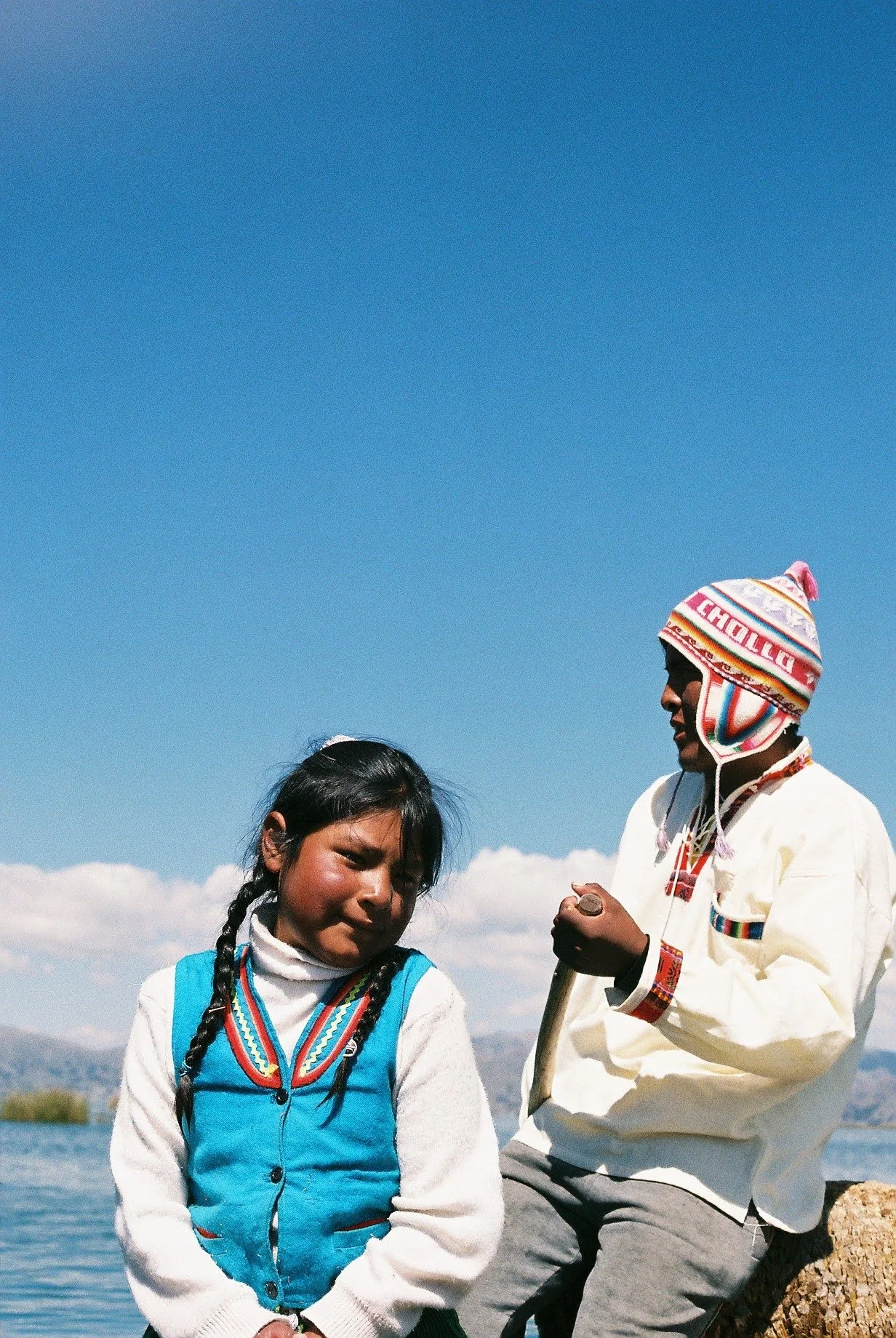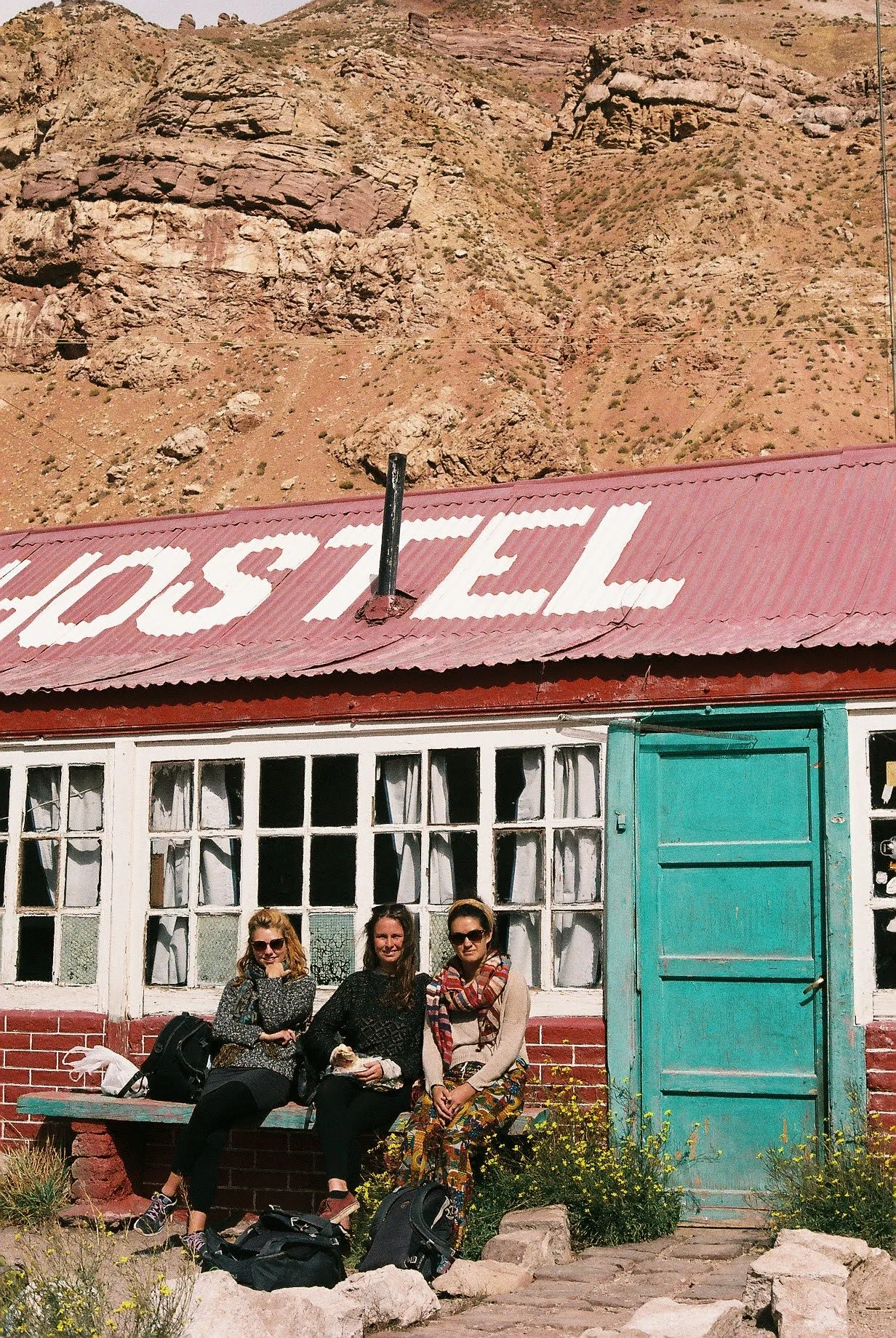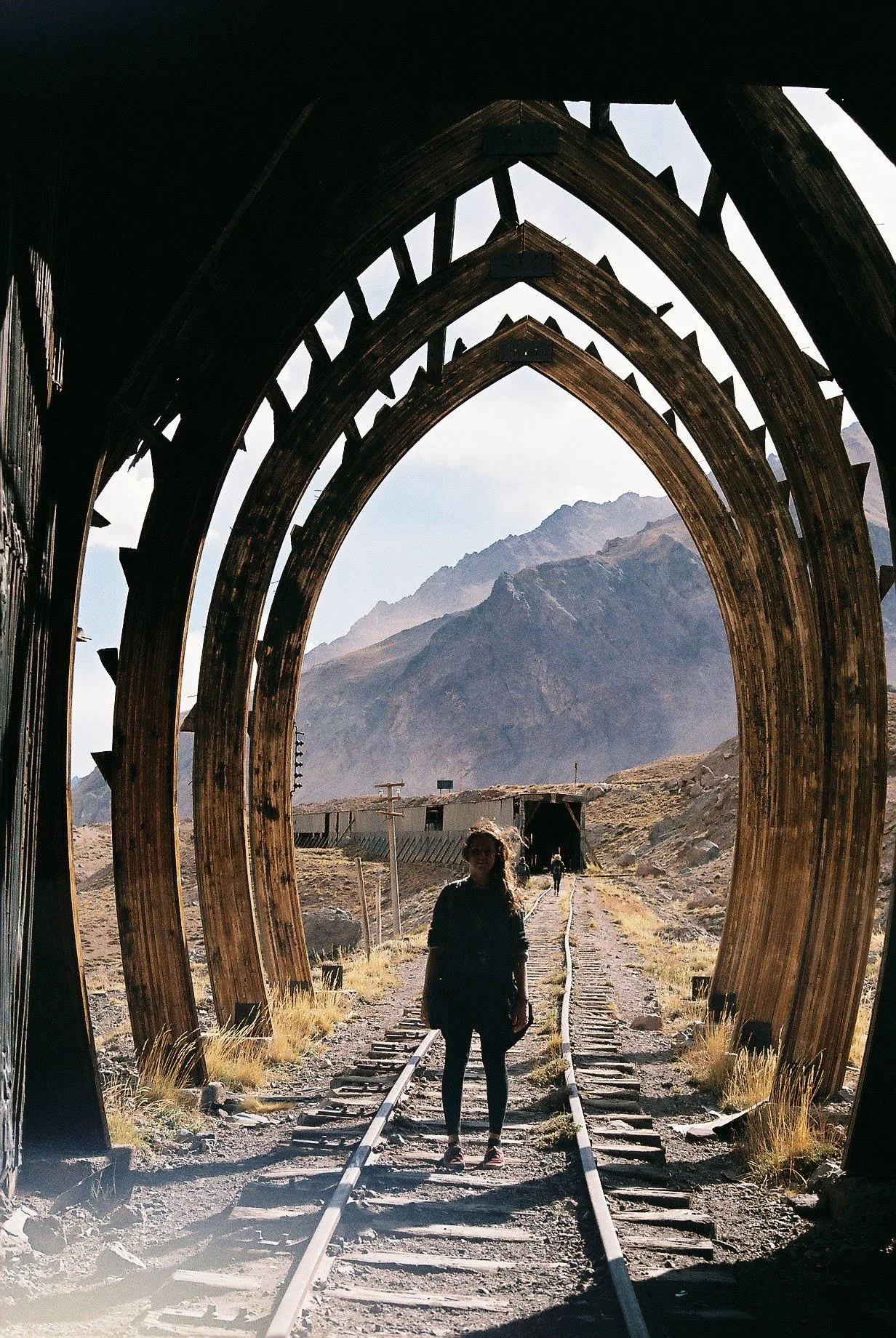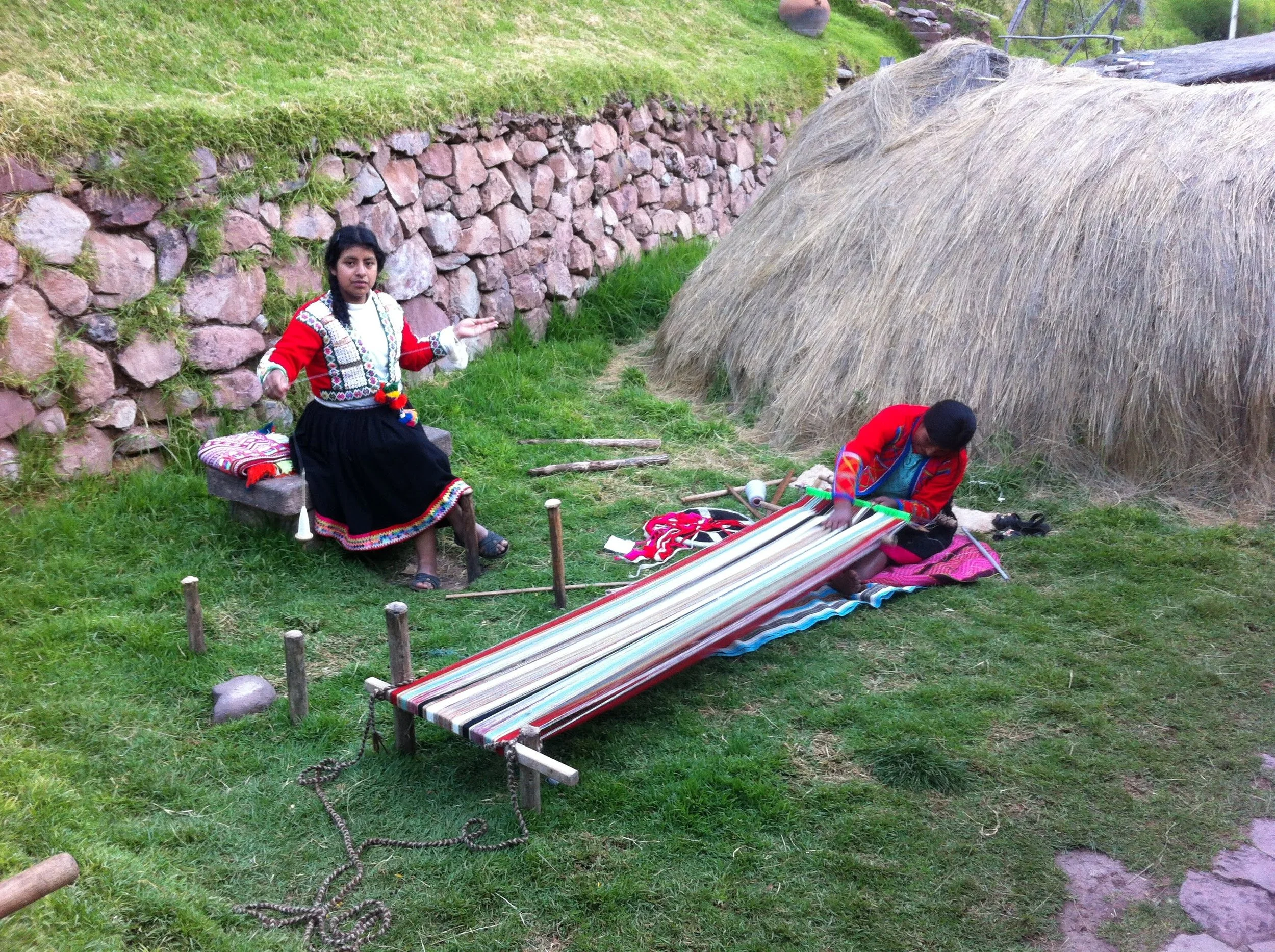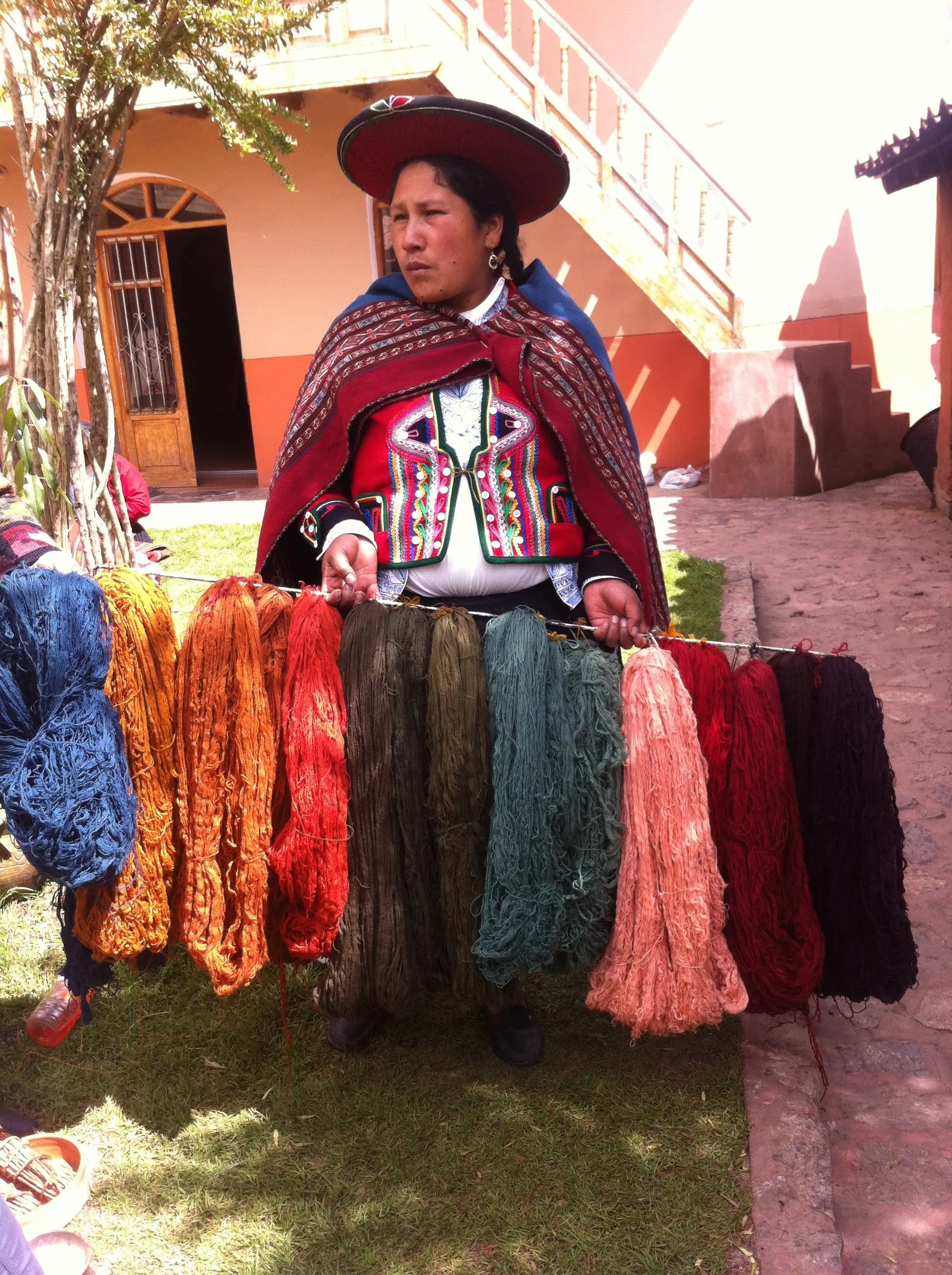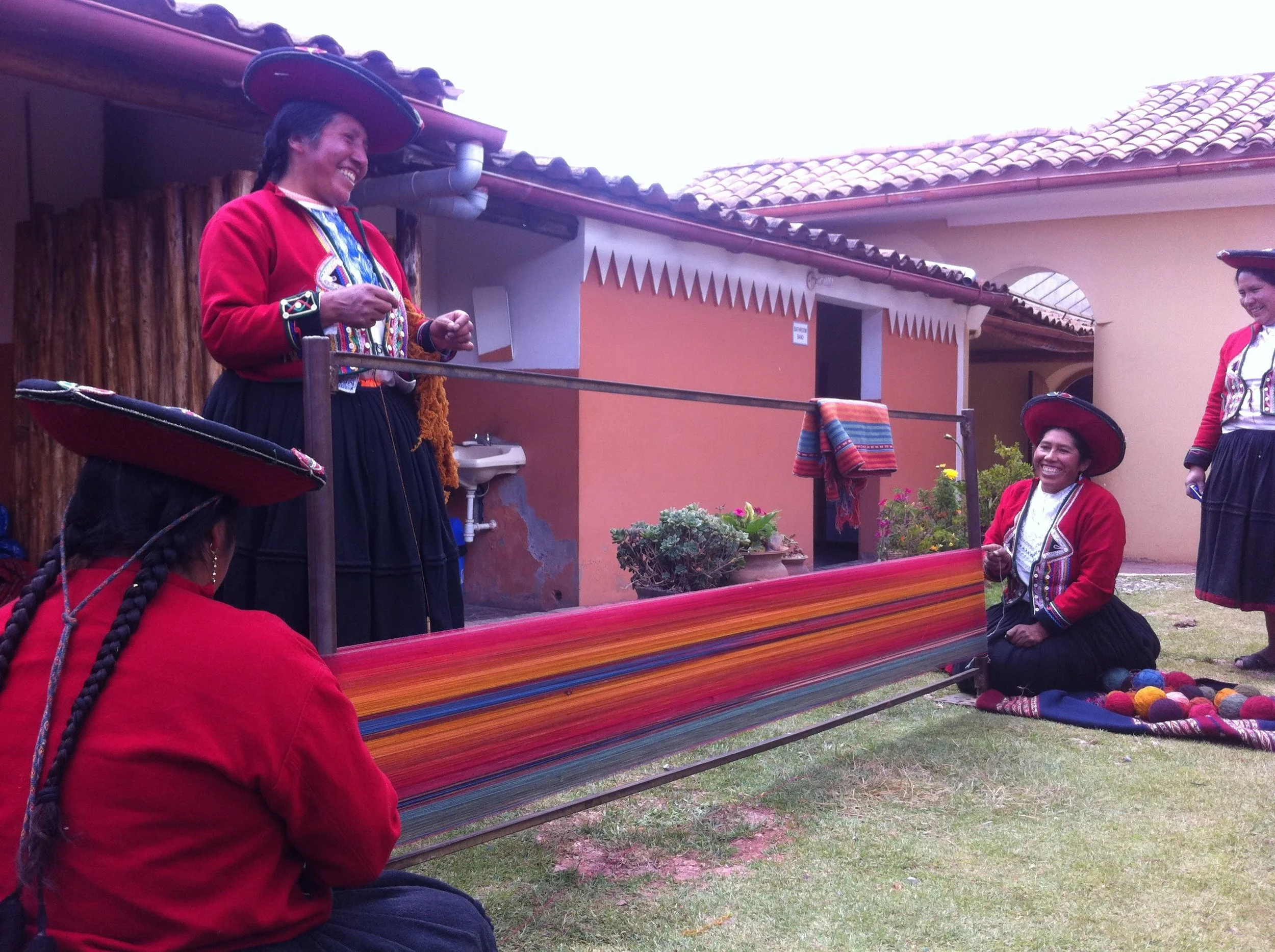Peru Weaving Trip
I had started my South American journey in Chile and took a few weeks to make my way up towards Peru, with a quick stop over in western Argentina. Once there I spent 5 weeks exploring this enormously diverse country with its spectacular landscapes ranging from desert to rainforest and mountains to coast. I took countless overnight buses, travelled on foot, by plane, taxi, tuc tuc and even spent 3 days on a cargo ship winding down the Amazon river, sleeping in a hammock.
As soon as I arrived in Peru I began to notice signs of traditional hand weaving almost immediately, from the vicunas grazing the planes waiting to be shorn to women gossiping on street corners, drop spindles in hand, busily at work. Our first stop was Arequipa, which is where I saw a backstrap loom in use for the first time, as we ventured deeper into the country I often saw women sat in their garden with the warp tensioned to a tree or post.
The backstrap loom has always interested me as it seems so different to the dobby or countermarch looms that I am used to working with. In Cusco my curiosity was satisfied when I spent a fascinating day with a teacher at The Cusco Centre for Textiles. I was astonished by how much slower the process was than on a frame loom. The skill of these weavers was incredible. They would lift each warp end individually to form the shed, creating intricate patterns from memory. Many of these patterns would have been taught to them by their mothers, handed down through the generations.
The textiles of the Andes have a rich and fascinating history. The Incas placed huge importance on their textiles and thus their woven fabrics were far more intricate and developed than elsewhere at that time. For thousands of years the early Peruvian cultures used textiles to document important information rather than written language. During the Inca reign every community had their own textile technique by which people could be identified. Today there are still regionally specific designs used by the weavers but they are now rarely used to identify communities.
One of the highlights of the trip was staying in a homestay on Lake Titicaca. On the first day of our trip the boat stopped off at one of the many floating islands of Uros. Incredibly these islands are made up purely of layered reeds and blocks of floating soil bound together by roots. Usually two families share an island and once a week everyone helps to add a fresh layer of reeds to stop the island from sinking! Their houses and boats are made of the same plant and they even chew the fleshy centre of the stalks for nutrition - talk about sustainability!
I stayed the night on Amantani island, which is covered by terraces sown with crops of multi coloured quinoa and oca (similar to a potato). The beauty and peacefulness of this location is astonishing, the surrounding lake is so vast it is easy to mistake it for the sea. At night we sat on the porch and watched a lightning storm in the distance, every flash reflected in the surface of the water. In the day time we explored the village and were fed delicious homemade soup and cheese by our hostess. All the woman we passed on the steep paths were spinning or knitting as they walked. They carried large bundles tied to their backs, seemingly unaffected by the altitude!
Taquile, the third and final island we visited on Lake Titicaca, is known for its high quality weavings. Weaving is a huge part of life on the island, it is practised by both men and women and taught to the children. The more skilled weavers are considered to be more favoured for high positions such as major or even as marriage partners. Faja, intricate belts decorated in agricultural and religious symbols are woven and given as marriage gifts. These thick, strong belts are used to support the back when carrying in the heavy harvests as well as for swaddling babies in to carry on their backs.
One of the most common forms of weaving still worn in the Andes is the Manta, a square blanket used mainly by women to carry things on their backs, often babies or harvested crops. They are also used for decorative adornment and warmth. Nowadays these blankets are often made from sheep wool coloured with synthetic dyes. There is still wide spread use of alpaca and llama yarn in the Andes but the use of natural dyes is fast diminishing as is common in many countries. Vicuna fleece is also used; they are a much smaller camelid than llamas and alpacas. They can only be shorn every three years which makes their fine, soft wool expensive and high in demand. During the Inca reign only royalty were allowed to wear vicuna fibres. Today vicunas are protected as they were nearly hunted to extinction in the late 1970's.
I found the people and landscapes of Peru hugely inspiring and I am deeply grateful for all that I learnt about its textile techniques and history. I will miss many things about Peru, the food, such as the delicious and health boosting prickly pear juice, to the rather unusual piranha, the vast night skies, awe inspiring landscapes and the bustling markets full of exotic smells. South America truly captured my heart and one day I hope to return!
For information on The Cusco Center of Textiles visit http://www.textilescusco.org/eng/









